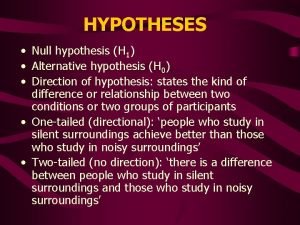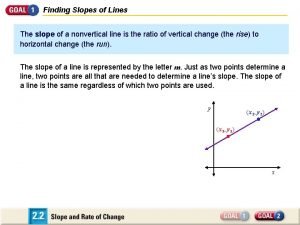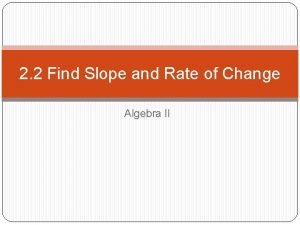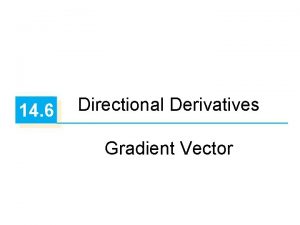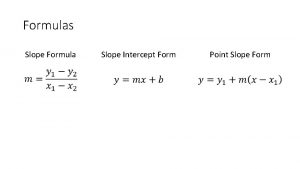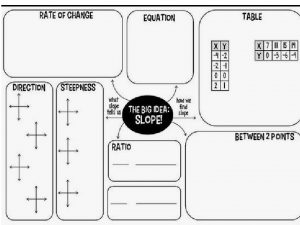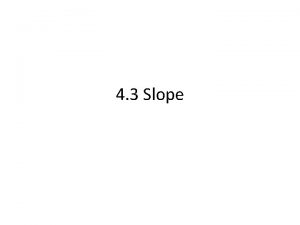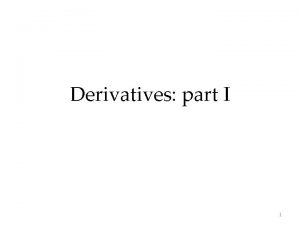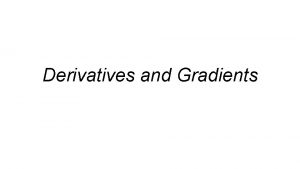Directional Derivatives ExampleWhats the slope of at 0
















- Slides: 16

Directional Derivatives

Example…What’s the slope of at (0, 1/2)? What’s wrong with the way the question is posed? What’s the slope along the direction of the x-axis? What’s the slope along the direction of the y-axis?

Recall that, if z = f(x, y), then the partial derivatives fx and fy are defined as: They represent the rates of change of z in the x- and y-directions—that is, in the directions of the unit vectors i and j.

• Suppose that we now wish to find the rate of change of z at (x 0, y 0) in the direction of an arbitrary unit vector u = <a, b>.

The rate of change of f(x, y) in the direction of the unit vector is called the directional derivative and is denoted by

Theorem: If f is a differentiable function of x and y, then f has a directional derivative in the direction of any unit vector u = <a, b> and

Proof:

Special Cases: Where, u = <a, b> * If u = i = <1, 0>, then Di f = fx. ** If u = j = <0, 1>, then Dj f = fy. In other words, the partial derivatives of f with respect to x and y are just special cases of the directional derivative.

• Suppose the unit vector u makes an angle θ with the positive x-axis, as shown.

• Then, we can write u = <cos θ, sin θ> and the formula becomes:

Example-1

Example-2: Find the directional derivative Duf(x, y) if: – f(x, y) = x 3 – 3 xy + 4 y 2 – u is the unit vector given by angle What is Duf (1, 2)? θ = π/6

How about the directional derivative for a function of 3 variables?

Class work-1

Class work-2: Find where in the direction of

Quick survey I feel I understand “DD” a) Very well b) With some review, I’ll be good c) Not really d) Not at all
 Directional and non directional hypothesis
Directional and non directional hypothesis Example of statement of the problem in research
Example of statement of the problem in research 2.58 z score
2.58 z score Directional hypothesis example
Directional hypothesis example Directional and non directional hypothesis
Directional and non directional hypothesis Directional and non directional hypothesis
Directional and non directional hypothesis What is directional and non directional hypothesis
What is directional and non directional hypothesis Point-slope form definition geometry
Point-slope form definition geometry Slope review classifying slope
Slope review classifying slope Slope review classifying slope
Slope review classifying slope The difference between slope decline and slope retreat
The difference between slope decline and slope retreat Lời thề hippocrates
Lời thề hippocrates Các loại đột biến cấu trúc nhiễm sắc thể
Các loại đột biến cấu trúc nhiễm sắc thể Vẽ hình chiếu đứng bằng cạnh của vật thể
Vẽ hình chiếu đứng bằng cạnh của vật thể Phản ứng thế ankan
Phản ứng thế ankan Các môn thể thao bắt đầu bằng tiếng chạy
Các môn thể thao bắt đầu bằng tiếng chạy Khi nào hổ con có thể sống độc lập
Khi nào hổ con có thể sống độc lập




